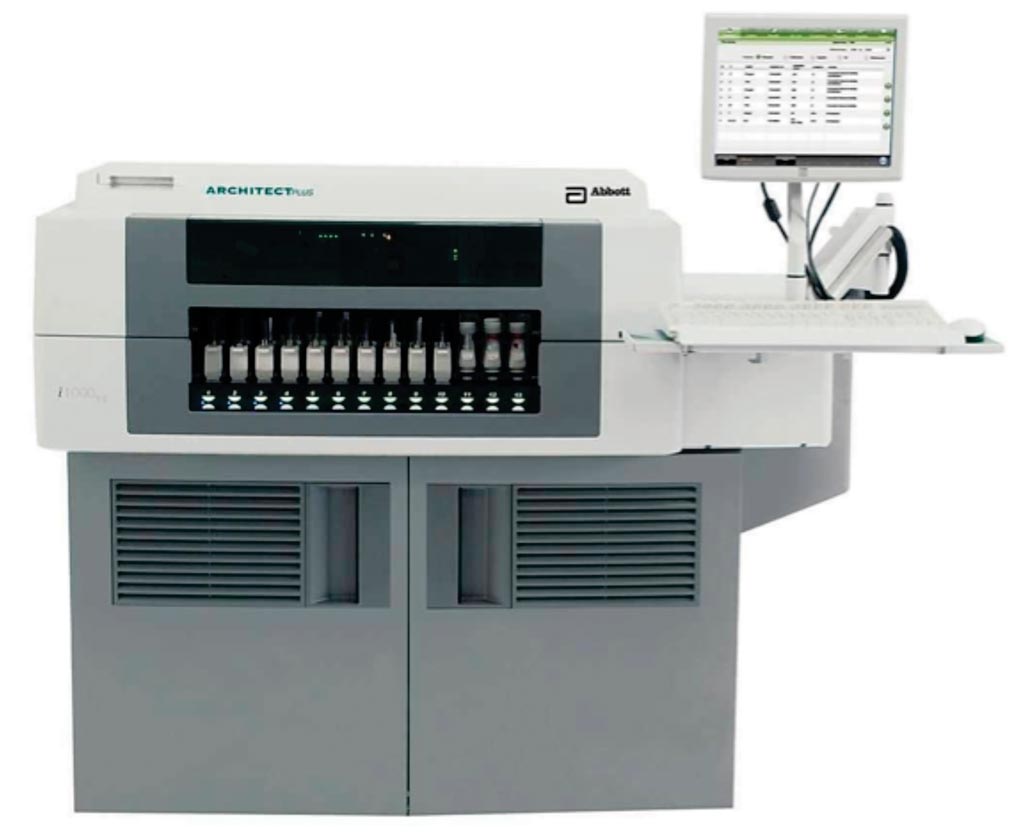Cardiac Troponin Assays Compared in Large Cohort
By LabMedica International staff writers
Posted on 19 Nov 2018
High-sensitivity (hs) assays for the measurement of cardiac troponin T (cTnT) and cardiac troponin I (cTnI) are now used widely for the diagnosis of myocardial infarction. The universal definition of myocardial infarction recommends the 99th centile derived from a normal reference population be used to define myocardial necrosis.Posted on 19 Nov 2018
However, it is also increasingly apparent that troponin concentrations well below this threshold provide diagnostic and prognostic information for patients with both acute and stable cardiovascular diseases and may have a role in screening the general population. Few studies have measured both cTnI and cTnT in a single large general population cohort.

Image: The automatic immunoassay analyzer / chemiluminescence ARCHITECT i1000SR (Photo courtesy of Abbott Diagnostics).
A group of cardiology scientists mainly from the University of Glasgow (Glasgow, UK) measured troponins in serum from 19,501 individuals in the Generation Scotland Scottish Family Health Study. Associations with cardiovascular risk factors were compared using age- and sex-adjusted regression. Observed age- and sex-stratified 99th centiles were compared with 99th centiles for cTnT (men, 15.5 ng/L; women, 9.0 ng/L) and cTnI (men, 34.2 ng/L; women, 15.6 ng/L) used in clinical practice.
The team measured hs-cTnT and hs-cTnI on Cobas e411 and i1000SR analyzers, respectively. Both assays were calibrated and quality controlled using the manufacturer's reagents. Coefficients of variations (CVs) for cTnI were 6.2% for the low control, 6.0% for intermediate control, and 4.6% for high control. CVs for cTnT were 5.0% for the low control and 3.4% for the high control.
The team reported that cTnT and cTnI concentrations were detectable in 53.3% and 74.8% of participants, respectively, and were modestly correlated in unadjusted analyses (R2 = 21.3%) and only weakly correlated after adjusting for age and sex (R2 = 9.5%). Cardiovascular risk factors were associated with both troponins, but in age- and sex-adjusted analyses, cTnI was more strongly associated with age, male sex, body mass index, and systolic blood pressure. cTnT was more strongly associated with diabetes. The observed 99th centiles were broadly consistent with recommended 99th centiles in younger men and women. After the age of 60 years, observed 99th centiles increased substantially for cTnT, and beyond 70 years of age, the 99th centiles approximately doubled for both troponins.
The authors concluded in a large cohort study from a general population, cTnT and cTnI concentrations are differentially associated with cardiovascular risk factors and are weakly correlated with each other. Existing sex-specific 99th centiles are broadly appropriate for both men and women up to the age of 60 years. Beyond the age of 70 years, the 99th centile is approximately three-fold higher for cTnT in both men and women and two-fold higher for cTnI in women. The study was published in the October 2018 issue of the journal Clinical Chemistry.
Related Links:
University of Glasgow







 Analyzer.jpg)





